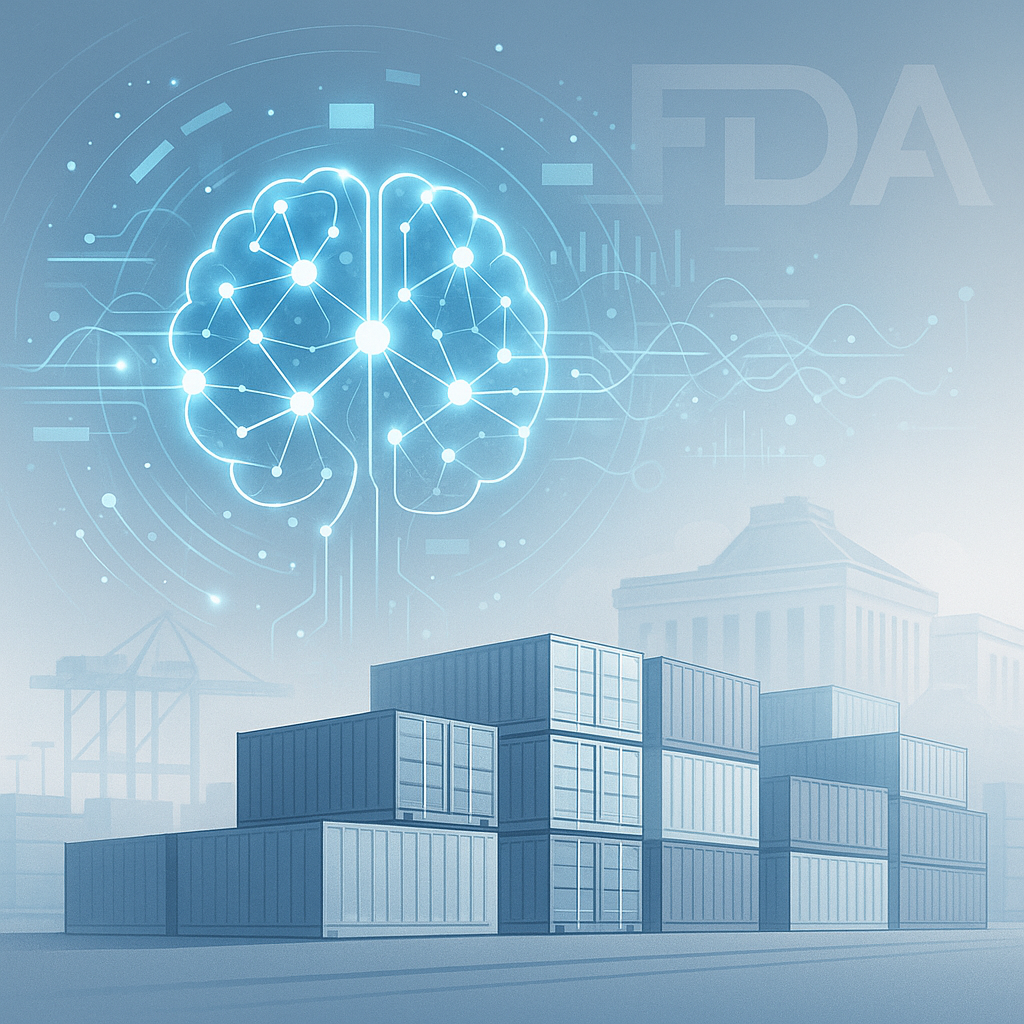
Summary:
FDA ELSA AI food safety efforts mark a turning point in how the agency screens food imports, using machine learning to flag high-risk shipments.
In June 2025, the FDA announced the agency-wide launch of a powerful new AI tool named ELSA (Enhanced Learning and Surveillance Algorithm). Designed to improve how the FDA screens imported foods, ELSA uses machine learning to detect high-risk shipments and flag violations more accurately than ever before. This post explores what ELSA does, how it works, real-world results from its rollout, the kinds of repetitive tasks it streamlines, and concerns from consumer advocates and trade stakeholders.
🧠 What Is ELSA?
ELSA (Enhanced Learning and Surveillance Algorithm) is an AI-powered tool developed by the FDA to enhance food import screening and regulatory oversight. Its primary function is to analyze massive volumes of data across food shipments, inspections, lab reports, shipping records, and historical violations to predict which imports are likely to violate safety standards.
In essence, ELSA helps the FDA prioritize which food shipments to inspect—making the screening process smarter, faster, and more risk-based.
📅 When Was ELSA Launched?
The FDA officially launched ELSA on June 2, 2025, following a successful pilot program that demonstrated significantly improved detection rates of violative food imports. According to the FDA, the tool was rolled out “ahead of schedule and under budget.”
🔄 Real-World Impact So Far
During its pilot, ELSA flagged nearly twice as many violative shipments compared to the FDA’s traditional risk assessment methods—without slowing down overall review times. For example:
- ELSA identified multiple shipments of frozen seafood contaminated with banned antibiotics, which had passed through standard filters undetected.
- The system also correctly predicted high-risk entries based on patterns in country of origin, supplier behavior, and seasonal shipment spikes.
Now used across all import entry decisions, ELSA helps field inspectors target efforts more effectively and allocate lab resources where they’re most needed.
🕰️ The Origin Story: FDA’s AI Vision
ELSA didn’t emerge out of nowhere. Back in 2022, the FDA published a plan in its “New Era of Smarter Food Safety” blueprint, signaling its intention to adopt AI to modernize how it handles food safety inspections and import oversight. It committed to “exploring AI-driven predictive tools” for smarter enforcement, and ELSA is the first system-wide realization of that vision.
🤖 What AI Model Does ELSA Use?
The FDA hasn’t released full technical details, but public statements confirm that ELSA uses a machine learning model trained on historical FDA data, including violation patterns, inspection logs, lab results, and supply chain metadata. It adapts as new data comes in, updating its risk prioritization algorithms over time.
Some reports suggest that ELSA is built with a random forest ensemble model at its core, capable of handling non-linear patterns and missing data—ideal for the diverse, high-volume datasets the FDA works with.
💡 What Repetitive Tasks Does ELSA Improve?
Before ELSA, FDA analysts and inspectors relied heavily on manual review processes:
- Sifting through thousands of import records daily
- Cross-referencing inspection reports, violation histories, and shipment metadata by hand
- Prioritizing inspections based on static rules and generic flags
ELSA automates and enhances these tasks by continuously learning from patterns in the data. It surfaces the most high-risk shipments instantly, reducing manual triage time and minimizing human error. This speeds up processing, increases detection accuracy, and frees up FDA staff to focus on higher-value analytical and enforcement activities.
🔼 What Protocols Guide ELSA’s Use?
ELSA follows an internal set of governance protocols and auditability standards set by the FDA’s Office of Regulatory Affairs. These include:
- Risk-Based Frameworks: Prioritize entries based on statistical likelihood of violation
- Transparency Logs: Document how decisions are made for traceability
- Model Monitoring: Regular performance reviews to check for drift or bias
Importantly, human supervision is still required. FDA reviewers use ELSA’s recommendations to inform, not replace, their final decisions. The system supports—but does not override—expert judgment.
⚠️ Public Concerns and Watchpoints
While ELSA has improved screening efficiency, consumer groups and international trade partners have raised some concerns:
- Bias and Discrimination: Some fear the model may unfairly flag imports from certain countries more than others, based on historical violations.
- Transparency: Stakeholders want greater visibility into how the model makes decisions, especially when it leads to import detentions.
- Due Process: Exporters flagged by ELSA have requested clear channels to appeal or question the risk scores assigned to their shipments.
The FDA has responded by pledging to increase transparency and stakeholder engagement as part of ELSA’s continuous improvement.
📊 What This Means for the Future
With ELSA, the FDA has entered a new phase of data-driven enforcement. It signals that AI will play a permanent role in how federal agencies manage public safety, and may pave the way for similar tools in pharmaceuticals, medical devices, and beyond.
At BioIntelAI, we’re tracking this evolution closely. ELSA is more than just a food import tool—it’s a signal that regulatory-grade AI is no longer theoretical. It’s here, and it’s scaling.
🔗 External References
- FDA Press Release on ELSA Launch (June 2025)
- Reuters Coverage: FDA Launches AI Tool
- >> Read our post on FDA’s 2025 Draft Guidance on AI in Drug Development
- >> Read our post on FDA’s Guidance on AI in Medical Devices
📬 Join 100+ life sciences professionals getting monthly AI insights. No spam, just signal.
